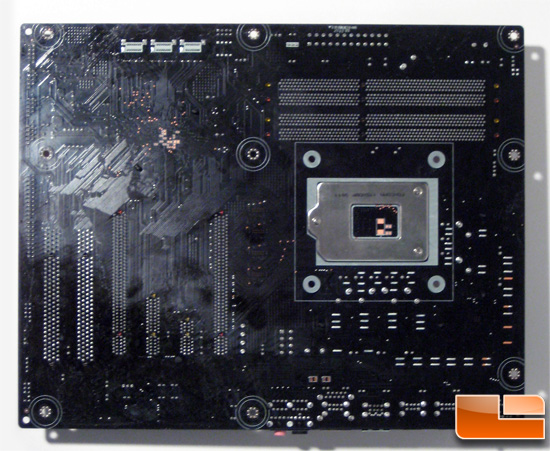ECS P55H-A BIOS, Board, and Bundle
First up we have the ECS P55H-A motherboard. ECS motherboards typically toe the line between the budget and enthusiast markets with component selections and layouts that scream of budget origins but with system features that edge them into the enthusiast market. The ECS P55H-A continues the trends in quality and performance that I have witnessed in past reviews of the X58B-A and P45T-A motherboards from ECS. Let's kick things off with a look at the BIOS.

For the P55H-A, ECS has used a modified Megatrends BIOS. This will become a familiar face throughout this motherboard roundup as it appears to be quite the popular option. Not much to see here though, just your typical BIOS menus with the important menu being the MIB sub-menu.

Being an enthusiast geared motherboard, the area you'll be spending the most time in will naturally be the CPU and memory tweaking sub-menu. Labeled MB Intelligent BIOS, here you have access to memory timings and sub-timings, base-clock and PCIe frequencies, and common board voltages.

It should be taken into consideration that the DDR3-1600 memory divider was not functioning regardless of CPU core/VTT and DIMM voltages. Dropping to the DDR3-1333 divider and then overclocking the base clock yielded a stable DDR3-2100 CAS 7 during testing, so the board and memory are compatible; it is simply a BIOS bug. Other than this one error everything else was fully functional with voltages measured with a multi-meter to be within ~0.05v of their set values in the BIOS.

The ECS P55H-A is by far the most sparse of the motherboards we have here today. I don't quite understand what the designers were thinking but the layout has a few tragic mistakes. Most outstanding is the placement of the +12v connector stuck in the center of the board. Look at all that space in the top right corner. Secondly is the placement of the only PCIe x1 slot; why not put this to the right of the primary PCIe x16 slot where that 4-pin power connector is? Lastly, if you are going to include an IDE connector, at least put it in a useful location. Typically people are still using IDE optical drives which are situated at the farthest point away from the IDE port location.

Here is a better shot of the gigantic amount of free space around the socket where that +12 connector could have been placed. The short passive PWM heatsinks have decorative golden dragons, but unfortunately one of them wasn't secured well and created an annoying rattling noise from any vibrations.

Nothing too special here; however the silk-screened DDR3-1333 instead of a DDR3-1600 may explain why the DDR3-1600 divider failed to function in the BIOS. Perhaps the BIOS engineers decided to only include features silk-screened onto the PCB. Regardless of speed the board does support 16GB of DDR3.

The six SATA-II connectors are provided by the P55 PCH along with the row of USB jumpers along the edge of the board. In between the SATA-II ports and the DIMM slots is the clear CMOS jumper. Thankfully, this board included an LED POST reader which made debugging the memory compatibility issues easy.

While not as stylish as most other power buttons, the ECS P55H-A power and reset buttons are just as functional.

Due to the limitations of the P55 platform and LGA1156 CPUs the two PCIe x16 slots drop to x8 bandwidth when both slots are populated. The PCIe x4, PCIe x1, and the two PCI slots are all routed through the P55 PCH. Above the first PCIe x16 slot is a power connector to augment the power available to the PCIe slots which I found wasn't necessary for the GTX 275 I was using.

Given the P55H-A budget features, it is no surprise to see PS/2 mouse and keyboard ports. There are 5 audio jacks, optical audio out, 8 USB 2.0 ports, an eSATA port, a single gigabit Ethernet port, and a very useful BIOS CMOS clear button.

Popping the PWM heatsinks off show a 4+2 PWM using traditional fets.

ECS has used a sticky thermal compound to attach the PCH heatsink to the actual chip. Given the low TDP of the P55 PCH there is no need for an active cooling solution.

The ICS 9LPRS926EGLF PLL is used to drive the baseclock and PCIe frequencies. It is supported by set FSB which was used to adjust the base clock in Windows.

The back of the ECS P55H-A hasn't got much going on, just an assortment of solder points.

I could have guessed the box art the moment I was informed I was receiving an ECS motherboard. Dragon? Check! Ignoring the garish box art we also have a row of icons indicating processor support and CrossFire support.

Given how the ECS P55H-A is the budget option in this round-up, there is no surprise it has the sparsest of bundles. Installation manual, driver disk, IO shield, SATA cables, and an IDE cable round up the bundle.



















